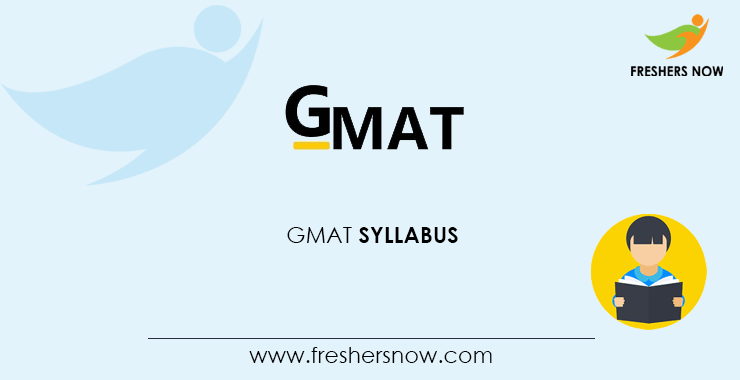When you decide to apply for an MBA degree, you must also be ready to face the first hurdle in your business school journey — the GMAT exam. The GMAT or the Graduate Management Assessment Test is a standardised exam that is an important part of the admission process for business schools abroad, and in India. A good GMAT score demonstrates your skills needed to succeed in business courses.
However, if you are appearing for the GMAT any time soon, it is important to familiarize yourself with the GMAT syllabus 2021. Knowing the exam pattern not only helps you in creating a time schedule but also prepares you to face the actual exam. Let’s begin with a brief overview of the GMAT syllabus.
GMAT Syllabus
The GMAT tests your skills in four areas — Analytical Writing Assessment (AWA), Integrated Reasoning (IR), Quantitative Reasoning (QR) and Verbal Reasoning(VR). You get 3 hours 30 minutes, with two 8-minute breaks, to complete the test. Let’s take a look at each section.
- Analytical Writing Assessment – The AWA section consists of one 30-minute essay writing task, wherein you are required to critique a topic and write an essay based on that. The scores range from 0-6, in 0.5 point intervals.
- Integrated Reasoning – The IR section of GMAT consists of 12 questions from four question types. The questions are designed to assess your ability to interpret and synthesize data given in multiple formats. You get 30 minutes to complete the section. The four types of questions asked are:
-
- Multi-source Reasoning, where you are tested for your ability to examine data presented in the form of text passages, graphics, tables etc.
- Table Analysis, where the questions test your skills to sort and analyze information given in the tabular format.
- Graphical Interpretation, where you have to interpret and make inferences from the graphically presented data.
- Two part Analysis, where you are required to solve more complex problems.
- Quantitative Reasoning – The Quantitative section of GMAT measures your ability to interpret data given in graphical format, and solve math problems. There are 31 questions in this section that have to be answered in 62 minutes. The question types are:
- Problem Solving, that measures your ability to solve numeric problems with logic and reasoning.
- Data Sufficiency, where you are given a problem, with a question and two statements. By examining the problem and statements, you must decide which data is relevant to answer the question.
- Verbal Reasoning – The verbal section tests your ability to read a passage and understand the meanings and relationships between the words and sentences. It also tests how well you evaluate and interpret a given argument. There are 36 mcqs from three sections to be completed in 65 minutes. The question types are:
-
- Reading Comprehension, where you are given a passage and are required to comprehend the main idea, logical structure, style etc., of the passage.
- Critical Reasoning, where your ability to construct or evaluate arguments and create a plan of action is measured.
- Sentence Correction, where a part or the sentence as a whole is underlined. You have to identify errors and correct them.
GMAT Books
Once you get a grasp of the syllabus, the next stage of preparation is learning the concepts asked in the exam using credible preparation resources. Besides online resources that are available for the GMAT preparation, you can still choose GMAT books as these are the best sources. Here’s a list of some best GMAT books that will help you during the prep.
- GMAT Official Guide 2021
- Jeff Sackmann’s Total GMAT Math
- GMAT for Dummies
If you are planning to take the GMAT exam, it is important to start your preparation as early as possible. A thorough understanding of the exam syllabus and the right resources will help you a lot during the preparation phase. Hence, consider the above information, get to know the syllabus and choose the right books for your preparation. Good luck!


